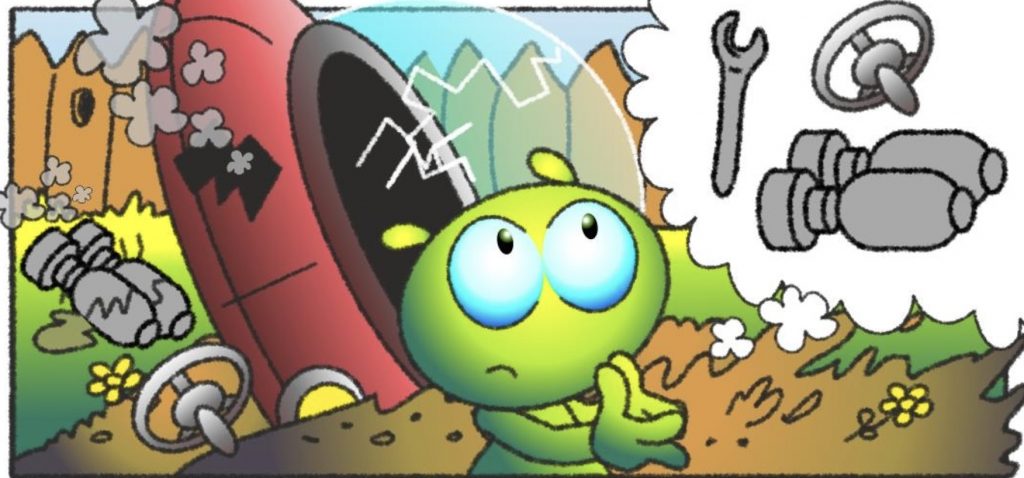Can Four-Year-Olds Understand Money? What We Learned from Arlo’s Adventures.
This blogpost was written by Dr Iro Xenidou-Dervou and Professor Tim Jay. Iro is a Reader in Mathematical Cognition at Loughborough University. Drawing on cognitive developmental psychology, her work explores how children develop mathematical and financial literacy skills. Tim is Professor of Psychology of Education at University of Nottingham. His work uses design research methods to improve learning in formal and informal contexts. Edited by Dr Bethany Woollacott.
In this blog post, Iro and Tim discuss financial literacy for children as young as four years old. Based on a large-scale validation of a comic-strip-based assessment called Arlo’s Adventures, this post outlines how researchers tested the tool’s reliability and scalability (link to project page at the end of this blogpost). It also highlights how children’s early numeracy skills relate to early financial literacy skills and why parental confidence doesn’t always align with children’s actual knowledge.

Introduction
Imagine asking a four- or five-year-old where money comes from or what it means to save. You might get a surprising answer such as “From the card machine” or “You just tap your watch!”. These responses may seem amusing, but they reveal something deeper: children are absorbing ideas about money earlier than we might think.
Until recently, we lacked reliable ways to measure what young children actually know and understand about money and finance. Without such tools, it is difficult to design or evaluate financial literacy programmes aimed at the early years. This blog post explores our journey to fill that gap, using a story-based tool called “Arlo’s Adventures” to assess the financial literacy of children as young as four.
Why was this research needed?
Financial literacy plays a crucial role in lifelong well-being; however, research suggests that adults have consistently low levels of financial literacy, both in the UK and worldwide1. Research also tells us that early experiences, i.e., how and when children begin to think about money, are foundational to financial habits formed later in life2,3.
Yet, before Arlo’s Adventures, there was no validated method to assess financial literacy in children under six. This left a critical gap in our ability to design and evaluate programmes aimed at enhancing the early development of financial skills.
Testing the efficacy of Arlo’s Adventures
Arlo’s Adventures tells the story of an alien, Arlo, who crash-lands on Earth and must earn, save, and spend money to repair their spaceship4. The story unfolds through comic strips, which interviewers use as prompts to ask children specific questions about their knowledge and personal experiences with money.
Children are asked questions such as:
- “Where does money come from?”
- “Have you ever saved money for something?”
- “Have you seen someone pay with a phone or watch?”
In this project, we wanted to test whether Arlo’s Adventures validly assesses young children’s financial literacy and if it could reliably be used at scale. To achieve this, we administered Arlo’s adventures to 382 children across the UK, from diverse socioeconomic backgrounds. We also assessed their numeracy skills to understand the relationship between numeracy and financial literacy skills in the early years.
Presenting the Key Findings
Our results revealed that:
- There was large variation in children’s financial literacy scores within each age group, pointing towards the potential for developing appropriate activities and interventions that could help narrow these early gaps and support all children in building strong financial foundations.
- It’s feasible to assess financial literacy in 4–6-year-olds through engaging interviews. In-person, one-on-one interviews using the Arlo comic format were highly successful, with strong inter-rater reliability (ICC = 0.959) indicating consistency in how children’s answers were scored.
- Numeracy matters – but it’s not the whole story. Children’s numeracy skills explained about 31% of the variation in financial literacy scores, showing that while the two are related, they are not the same construct.
Further, when analysing children’s responses to Arlo’s Adventures’ questions, we identified a five-factor model of early financial literacy. In other words, we found that children’s responses grouped into five distinct key aspects of financial literacy:
- Transaction Methods – Knowledge about paying with cash, cards, or digital devices.
- Getting and Using Money – Experiences of earning or deciding how to use money.
- Saving – Understanding the idea of saving and safe places to store money.
- Where Money Comes From – Understanding that money comes from jobs or allowances.
- Spending – Making decisions about whether and how to spend money.
Children’s understanding was spread across these factors and varied by age, with older children demonstrating better financial literacy skills. Still, the variation within age groups was substantial.
Importantly, children’s financial understanding often did not align with what their parents believed about their skills, a finding which could have important implications for family-based financial literacy efforts.

Educational Impact: Three Key Points for researchers, teachers and parents.
- Early financial literacy is measurable and meaningful. This research shows it is possible – and useful – to assess financial literacy in the early years. Tools like Arlo’s Adventures can help teachers and researchers evaluate how and when financial understanding begins.
- Numeracy helps, but financial literacy is its own skill. While numerical skills play an important role, children’s financial literacy also depends on other factors. This means that financial literacy should be addressed explicitly and not be assumed as merely a by-product of mathematics learning.
- Parents need better tools and guidance. Since parents often misjudge their children’s financial knowledge and understanding, interventions aimed solely at children may fall short. Resources that help parents understand, model, and talk about money more effectively could increase impact.
Conclusion
Arlo’s Adventures is more than just a story about a stranded alien – it’s a new way of understanding how financial literacy begins. Our findings show that even very young children can think critically about money, and that it’s both possible and important to assess these skills early.
In schools and homes, early financial literacy needs more attention. With validated tools now available, researchers and educators are better equipped to give children a strong start in understanding the money world around them.
Funding
This project was funded by the UK Money and Pensions Service
Disclaimer: A ChatGPT model was used to support the writing of this blogpost. For more information, contact b.woollacott@lboro.ac.uk
References
[1] OECD (2020). OECD/INFE 2020 International Survey of Adult Financial Literacy. Paris: OECD. www.oecd.org/financial/education/launchoftheoecdinfeglobalfinancialliteracysurveyreport.htm
[2] OECD. (2017). PISA 2015 Results (Volume IV): Students’ Financial Literacy. OECD Publishing.
[3] Agnew, S. (2018). Financial literacy and financial well-being: A review of the evidence and policy implications. Journal of Economic Surveys, 32(3), 1–27.
[4] Jay, T., Rashid, S., Xenidou-Dervou, I., & Moeller, K. (2022). Measuring financial literacy of children aged 4 to 6 years: design and small-scale testing. Money and Pensions Service. https://maps.org.uk/en/publications/research/2022/measuring-financial literacy-of-children-aged-4-to-6-years-design-and-small-scale-test.
Centre for Mathematical Cognition
We write mostly about mathematics education, numerical cognition and general academic life. Our centre’s research is wide-ranging, so there is something for everyone: teachers, researchers and general interest. This blog is managed by Joanne Eaves and Chris Shore, researchers at the CMC, who edits and typesets all posts. Please email j.eaves@lboro.ac.uk if you have any feedback or if you would like information about being a guest contributor. We hope you enjoy our blog!